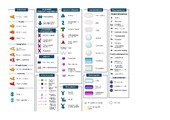| dc.contributor.author | Yadetie, Fekadu | eng |
| dc.contributor.author | Butcher, Stephen | eng |
| dc.contributor.author | Førde, Hilde E. | eng |
| dc.contributor.author | Campsteijn, Coen | eng |
| dc.contributor.author | Bouquet, Jean-Marie | eng |
| dc.contributor.author | Karlsen, Odd André | eng |
| dc.contributor.author | Denoeud, France | eng |
| dc.contributor.author | Metpally, Raghu | eng |
| dc.contributor.author | Thompson, Eric M. | eng |
| dc.contributor.author | Manak, J. Robert | eng |
| dc.contributor.author | Goksøyr, Anders | eng |
| dc.contributor.author | Chourrout, Daniel | eng |
| dc.date.accessioned | 2013-03-26T10:21:11Z | |
| dc.date.available | 2013-03-26T10:21:11Z | |
| dc.date.issued | 2012-02-02 | eng |
| dc.identifier.issn | 1471-2164 | en_US |
| dc.identifier.uri | https://hdl.handle.net/1956/6463 | |
| dc.description.abstract | Background Animals have developed extensive mechanisms of response to xenobiotic chemical attacks. Although recent genome surveys have suggested a broad conservation of the chemical defensome across metazoans, global gene expression responses to xenobiotics have not been well investigated in most invertebrates. Here, we performed genome survey for key defensome genes in Oikopleura dioica genome, and explored genome-wide gene expression using high density tiling arrays with over 2 million probes, in response to two model xenobiotic chemicals - the carcinogenic polycyclic aromatic hydrocarbon benzo[a]pyrene (BaP) the pharmaceutical compound Clofibrate (Clo). Results Oikopleura genome surveys for key genes of the chemical defensome suggested a reduced repertoire. Not more than 23 cytochrome P450 (CYP) genes could be identified, and neither CYP1 family genes nor their transcriptional activator AhR was detected. These two genes were present in deuterostome ancestors. As in vertebrates, the genotoxic compound BaP induced xenobiotic biotransformation and oxidative stress responsive genes. Notable exceptions were genes of the aryl hydrocarbon receptor (AhR) signaling pathway. Clo also affected the expression of many biotransformation genes and markedly repressed genes involved in energy metabolism and muscle contraction pathways. Conclusions Oikopleura has the smallest number of CYP genes among sequenced animal genomes and lacks the AhR signaling pathway. However it appears to have basic xenobiotic inducible biotransformation genes such as a conserved genotoxic stress response gene set. Our genome survey and expression study does not support a role of AhR signaling pathway in the chemical defense of metazoans prior to the emergence of vertebrates. | en_US |
| dc.language.iso | eng | eng |
| dc.publisher | BioMed Central Ltd. | en_US |
| dc.rights | Attribution CC BY | eng |
| dc.rights.uri | http://creativecommons.org/licenses/by/2.0/ | eng |
| dc.title | Conservation and divergence of chemical defense system in the tunicate Oikopleura dioica revealed by genome wide response to two xenobiotics | en_US |
| dc.type | Peer reviewed | |
| dc.type | Journal article | |
| dc.description.version | publishedVersion | en_US |
| dc.rights.holder | © 2012 Yadetie et al; licensee BioMed Central Ltd. This is an Open Access article distributed under the terms of the Creative Commons Attribution License (http://creativecommons.org/licenses/by/2.0), which permits unrestricted use, distribution, and reproduction in any medium, provided the original work is properly cited. | en_US |
| dc.identifier.doi | https://doi.org/10.1186/1471-2164-13-55 | |
| dc.identifier.cristin | 926733 | |
| dc.source.journal | BMC Genomics | |
| dc.source.40 | 13 | |
| dc.source.14 | 55 | |


